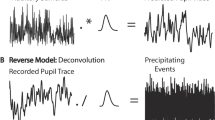Abstract
Muscle fibre conduction velocity is an important measurement in electrophysiology, both in the research laboratory and in clinical practice. It is usually measured by placing electrodes spaced at known distances and estimating the transit time of the action potential. The problem, common to all methods, is the estimation of this time delay. Several measurement procedures, in the time and frequency domains, have been proposed. Time-domain strategies usually require two acquisition channels, whereas some frequency-domain methods can be implemented using a single one. The method described operates in the time domain, making use of the autocorrelation function of the difference signal obtained from two needle electrodes and only one acquisition channel. Experimental results were obtained from the electromyogram of two biceps muscles (two adult male subjects, nine records each) under voluntary contraction, yielding an average of 3.58 m s−1 (SD=0.04 m s−1) and 3.37 m s−1 (SD=0.03 m s−1), respectively. Several tests showed that the proposed method works properly with electromyogram records as short as 0.3 s.
Similar content being viewed by others
References
Erlanger, J. andGasser, H. S. (1937): ‘Electrical signs of nervous activity’ (University of Pennsylvania Press, Philadelphia, USA, 1937)
Geddes, L. A., andHoff, H. E. (1968): ‘Who was the first biomedical engineer?’,Biomed. Eng.,3, pp. 551–558
Harba, M. I., andTeng, L. Y. (1999): ‘Reliability of measurement of muscle fiber conduction velocity using surface EMG’,Frontiers Med. Biol. Eng.,9, pp. 31–47
Lindström, L., andMagnusson, R. (1977): ‘Interpretation of myoelectric power spectra: A model and its applications’,Proc. IEEE,65, pp. 653–662
Parker, P., andScott, R. (1973): ‘Statistics of the myoelectric signal from monopolar and bipolar electrodes’,Med. Biol. Eng.,11, pp. 591–596
Parker, P., Stuller, J., andScott, R. (1977): ‘Signal processing for the multistate myoelectric channel’,Proc. IEEE,65, pp. 662–674
Pattichis, C. S., Schofield, I., Merletti, R., Parker, P. A., andMiddleton, L. T. (Eds) (1999): ‘Intelligent data in electromyography and electroneurology’,Med. Eng. Phys.,21, (special issue), pp. 379–523
Schwartz, M., andShaw, L. (1975): ‘Signal processing: discrete spectral analysis, detection and estimation’ (McGraw-Hill, Tokyo, 1975), pp. 148–215
Vicar, G., andParker, P. (1988): ‘Spectrum dip estimator of nerve conduction velocity’,IEEE Trans. Biomed. Eng.,35, pp. 1069–1076
Zorn, H., andNaeije, H. (1983): ‘On-line muscle fibre action potential conduction velocity measurement using the surface EMG cross-correlation technique’,Med. Biol. Eng. Comput.,21, pp. 239–240
Author information
Authors and Affiliations
Corresponding author
Rights and permissions
About this article
Cite this article
Spinelli, E., Felice, C.J., Mayosky, M. et al. Propagation velocity measurement: Autocorrelation technique applied to the electromyogram. Med. Biol. Eng. Comput. 39, 590–593 (2001). https://doi.org/10.1007/BF02345151
Received:
Accepted:
Issue Date:
DOI: https://doi.org/10.1007/BF02345151




